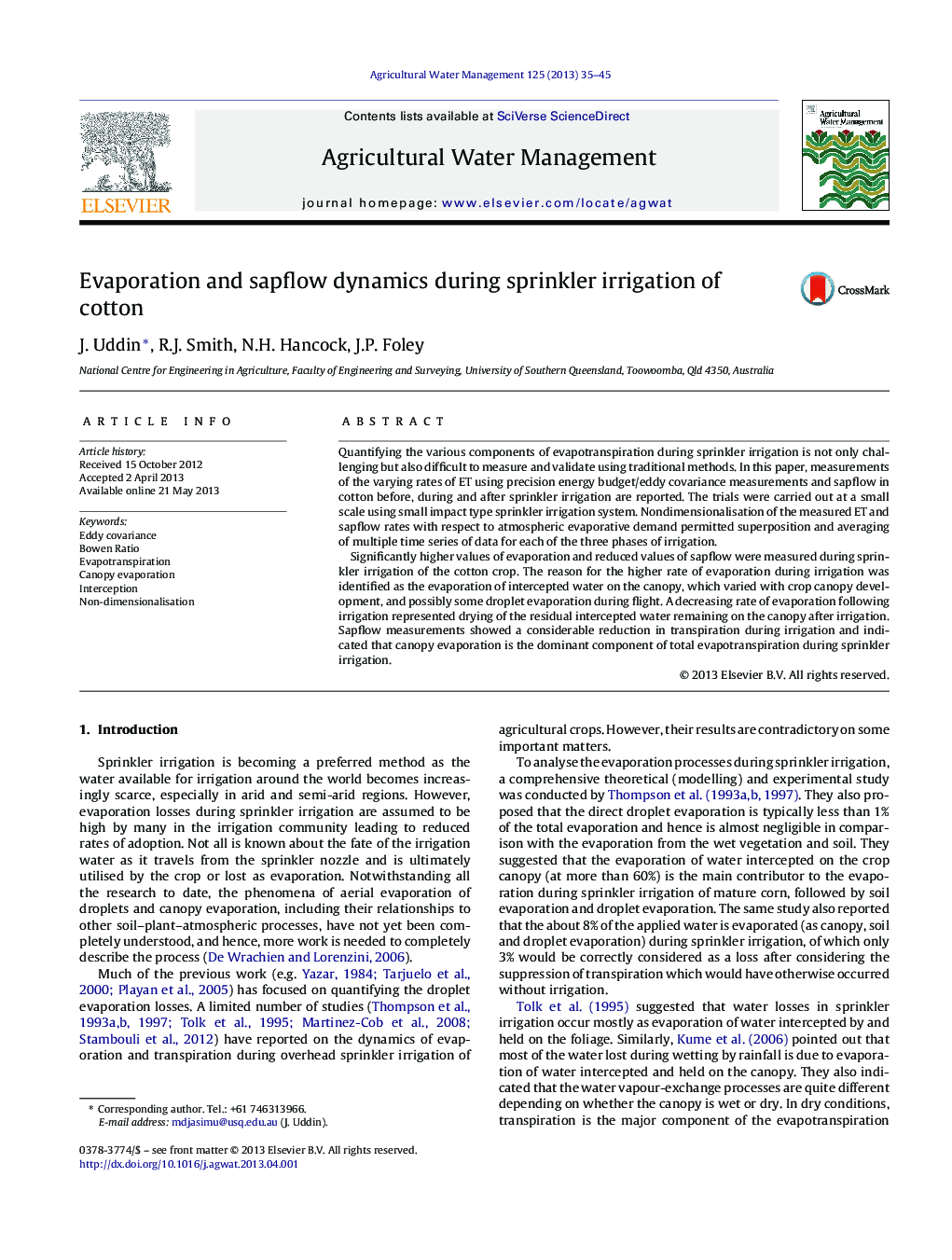| Article ID | Journal | Published Year | Pages | File Type |
|---|---|---|---|---|
| 4478865 | Agricultural Water Management | 2013 | 11 Pages |
•ET and sapflow measurements during sprinkler irrigation provided a compelling picture of the changing E and T.•Despite atmospheric demand decreases, actual ET increased markedly during irrigation.•Major components of ET as a result of the irrigation are canopy evaporation and residual canopy interception.•Sapflow was suppressed markedly during irrigation and recovered over the drying period.•The rate of ET decreased exponentially over the drying (post irrigation) period.
Quantifying the various components of evapotranspiration during sprinkler irrigation is not only challenging but also difficult to measure and validate using traditional methods. In this paper, measurements of the varying rates of ET using precision energy budget/eddy covariance measurements and sapflow in cotton before, during and after sprinkler irrigation are reported. The trials were carried out at a small scale using small impact type sprinkler irrigation system. Nondimensionalisation of the measured ET and sapflow rates with respect to atmospheric evaporative demand permitted superposition and averaging of multiple time series of data for each of the three phases of irrigation.Significantly higher values of evaporation and reduced values of sapflow were measured during sprinkler irrigation of the cotton crop. The reason for the higher rate of evaporation during irrigation was identified as the evaporation of intercepted water on the canopy, which varied with crop canopy development, and possibly some droplet evaporation during flight. A decreasing rate of evaporation following irrigation represented drying of the residual intercepted water remaining on the canopy after irrigation. Sapflow measurements showed a considerable reduction in transpiration during irrigation and indicated that canopy evaporation is the dominant component of total evapotranspiration during sprinkler irrigation.
